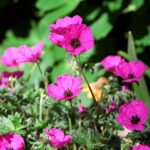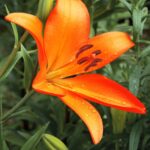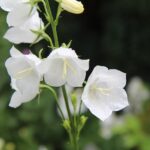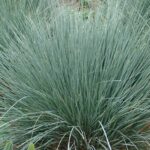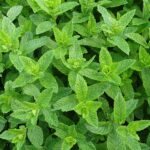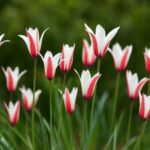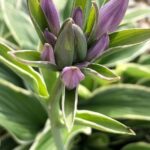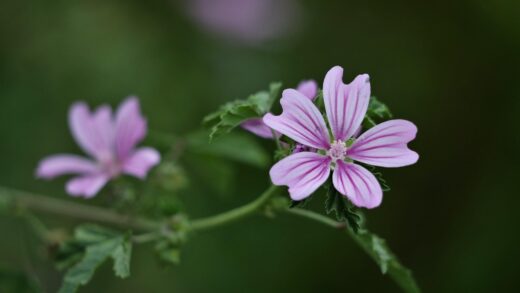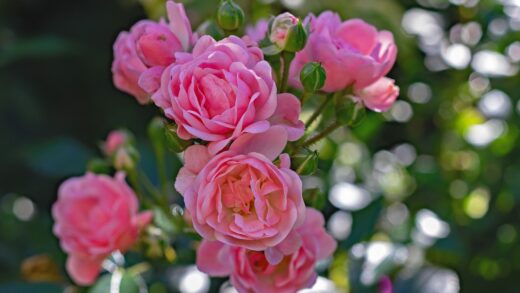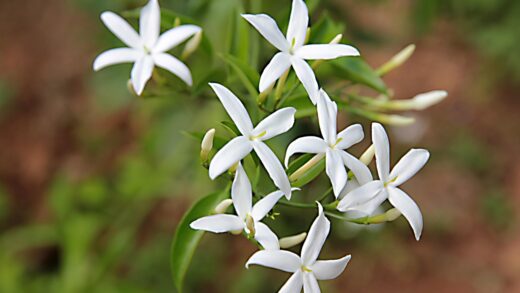The African daisy, also known as the Cape marigold or Glandular Cape marigold, is an impressively beautiful annual or short-lived perennial plant native to South Africa, beloved by gardeners for its brightly colored, daisy-like flowers. Although generally considered a relatively resistant ornamental plant, unfortunately, it is not entirely immune to various diseases and pests, which can occasionally cause serious headaches for its caretaker. With the appropriate knowledge, however, these problems can be effectively prevented and treated, thus ensuring the healthy development of our plants and their abundant flowering. In this article, we will introduce in detail the most common pathogens and pests that affect the African daisy, and we will also discuss possible control methods so that everyone can enjoy these sunny, joy-radiating flowers for a long time.
Appearance and characteristics of fungal diseases
African daisies are most frequently attacked by various fungal infections, especially in humid, warm weather conditions, or if the plants are planted too densely, which hinders adequate air circulation. These diseases can cause a variety of symptoms on the leaves, stems, and even on the flowers, significantly reducing the plant’s aesthetic value and vitality. Early detection and rapid intervention are crucial for successful protection, as a widespread infection is much more difficult to manage. It is important to remember that prevention is always easier and more effective than a battle against an already established disease.
Among the most common fungal diseases is powdery mildew, which forms a characteristic white, powdery coating on the upper and lower surfaces of the leaves, as well as on young shoots. This coating inhibits photosynthesis; the leaves can become deformed, turn yellow, and then fall prematurely. In severe cases, it can lead to the weakening of the entire plant. Another common problem is downy mildew, which tends to cause a grayish-white or purplish moldy growth primarily on the underside of the leaves, while yellowish, indistinct spots appear on the upper surface of the leaf. Downy mildew also prefers a humid environment and can spread rapidly within the plant stand.
Damping-off is a complex of fungal diseases that specifically threatens young, germinating, or freshly planted seedlings, and is caused, among others, by fungi of the genera Pythium, Fusarium, and Rhizoctonia. As a result of the infection, the stem of the young plants thins near the soil surface, softens, and then the plant simply topples over and dies. To prevent this, it is crucial to use high-quality, sterile seedling mix, avoid overwatering, and ensure adequate ventilation. Grey mold (Botrytis cinerea) can also be a frequent guest, especially in cool, humid weather, and it primarily settles on damaged plant parts and wilted flowers, where it forms a grey, velvety mold.
The basis of fungal disease control is prevention, which includes ensuring suitable growing conditions, such as a sunny location, well-drained soil, maintaining optimal planting distance between plants for good air circulation, and avoiding excessive nitrogen fertilization. Correct timing of irrigation is also important; if possible, water in the morning so that the foliage can dry during the day, and avoid unnecessary wetting of the leaves. If an infection nevertheless occurs, upon noticing the first symptoms, the diseased plant parts must be immediately removed and destroyed to prevent further spread. In more severe cases, the application of appropriate fungicides may be necessary, but environmental aspects and the product’s instructions for use must always be considered.
More articles on this topic
Dangers of root and crown diseases
Root and crown diseases present an insidious problem for the African daisy, as their symptoms often become apparent only when the infection is already at an advanced stage. These diseases are typically caused by soil-borne fungi that penetrate the plant through the root system or the lower part of the stem. Excessive watering, poorly drained, compacted soil, and stagnant water greatly promote the proliferation of these pathogens and the development of the infection. Prevention is also of paramount importance here, as a severely damaged root system recovers with difficulty.
Among the most common root rot-causing fungi are species of Phytophthora, Pythium, and Rhizoctonia. In the initial stage of the infection, the plant’s growth slows, the leaves begin to yellow and wilt, even if the soil appears moist. This happens because the damaged roots cannot absorb enough water and nutrients. If the plant is carefully removed from the pot or soil, the roots may be brownish, soft, and crumbly, instead of healthy, white, strong roots. In severe cases, the crown may also rot, leading to the rapid death of the plant.
Fusarium wilt, caused by fungi of the genus Fusarium, can also pose a serious threat. This pathogen infects through the roots and then spreads in the plant’s conductive tissues, clogging them and thus hindering the flow of water and nutrients. As a result, one side of the plant or individual shoots suddenly begin to wilt, yellow, and then dry out, while the rest of the plant may temporarily still appear healthy. As the disease progresses, the entire plant dies. A characteristic of Fusarium infection can be a brownish discoloration visible in the cross-section of the stem along the vascular bundles.
To prevent root and crown diseases, it is essential to use high-quality, loose-structured soil with good water permeability. In the case of container cultivation, ensure drainage holes at the bottom of the pot and use a drainage layer. Avoid overwatering, always allowing the topsoil layer to dry out slightly between waterings. It is important to practice crop rotation in garden beds to reduce the amount of pathogens accumulating in the soil. If signs of infection are observed, the affected plants, unfortunately, often have to be removed and destroyed to prevent further spread, and the surrounding soil should be disinfected or replaced.
More articles on this topic
Attack of aphids and other sucking pests
African daisies can be attacked not only by fungal diseases but also by various sucking pests, which cause damage by sucking plant sap. Among these, aphids are the most common and well-known, but other small insects can also pose a serious problem. Sucking pests not only weaken the plant with their direct damage but can often also transmit viruses, and the honeydew they excrete, on which sooty mold develops, can further worsen the plant’s condition and aesthetic appearance. Regular inspection helps to detect the appearance of pests in time.
Aphids are small insects, usually green, black, or yellowish, that appear in colonies on young shoots, the undersides of leaves, and flower buds. With their piercing-sucking mouthparts, they suck plant sap, which leads to leaf deformation, yellowing, and cessation of shoot growth. In addition, they excrete honeydew, a sticky, sugary substance that attracts ants and serves as a growth medium for sooty mold fungi, which form a black coating on the leaves, inhibiting photosynthesis. Aphids reproduce quickly, so early intervention is important.
Spider mites can also be frequent guests, especially in hot, dry weather. These tiny, spider-like creatures live on the undersides of leaves and spin a fine web. As a result of their sucking, small, yellowish or whitish spots appear on the leaves; later the leaves acquire a bronze hue, dry out, and fall off. In a severe infestation, the entire plant can be covered by a spiderweb-like web. The presence of spider mites is difficult to detect due to their size, so it is advisable to regularly inspect the undersides of the leaves, even with a magnifying glass.
Thrips are small, slender, winged insects that also suck plant sap, but in addition, with their rasping mouthparts, they also damage leaf tissues. As a result of their damage, silvery or whitish spots and streaks appear on the leaves, and flower petals can become deformed and discolored. The excrement of thrips is visible as small, black dots on the leaves. These pests can also transmit viruses. Controlling them can be difficult due to their hidden lifestyle and rapid reproduction, so it is recommended to prioritize preventive measures and biological control methods.
Chewing pests and other occasional guests
Although the African daisy is not among the primary targets of chewing pests, various caterpillars, snails, or even grasshoppers can occasionally damage the leaves and flowers. These pests typically chew irregular holes and indentations in plant parts, which can cause aesthetic problems and, in more severe cases, can also inhibit the plant’s development. The extent of the damage is usually not as significant as in the case of sucking pests or fungal diseases but deserves attention.
Caterpillars of various butterfly species can occasionally appear on the African daisy and cause damage by chewing leaves, or less often, flower petals. The extent of the damage depends on the number and developmental stage of the caterpillars. In the case of a small number of individuals, the caterpillars can be collected manually and removed. In a larger infestation, biological insecticides, for example, preparations based on Bacillus thuringiensis, can be used, which act selectively on caterpillars while sparing beneficial insects. Regular inspection is important to detect damage in time.
Slugs and snails can cause problems especially during humid, rainy periods or in shadier, moister parts of the garden. They are active at night and leave behind irregularly chewed holes on leaves and young shoots, as well as a characteristic slimy trail. Control can be done in several ways: lime dust, sawdust, or crushed eggshells sprinkled around the plants can form a physical barrier. Various snail traps (for example, a beer trap) can also be effective, and environmentally friendly snail pellets are also commercially available.
Occasionally, other chewing pests, such as some beetles or grasshoppers, may also taste the leaves of the African daisy. Their damage is usually sporadic and insignificant, so they rarely require special control. The most important thing is to maintain the garden’s biodiversity, which promotes the presence of natural enemies, such as predatory insects and birds, which help to keep the populations of these pests under control. Chemical control should only be applied in justified cases, as a last resort.
Viral diseases and their symptoms
Although viral diseases in the African daisy are less common than fungal infections or problems caused by sucking pests, their occurrence can be expected. Viruses are microscopic pathogens that, by penetrating plant cells, subordinate their metabolism to their own reproduction. There are currently no specific plant protection product treatments against viral infections, so the greatest emphasis must be placed on prevention and preventing spread. Viruses are often transmitted by sucking pests, such as aphids or thrips, from one plant to another.
The symptoms of viral infections can be extremely varied and often difficult to distinguish from changes caused by other diseases or nutrient deficiencies. A common symptom is mosaic discoloration of the leaves, which consists of yellowish or light green spots or streaks in the normal green leaf tissue. Leaf deformation, curling, spooning, as well as stunting of plants and stunted development can also occur. The color of the flowers can change, they can become mottled, or the flower petals can become deformed. It is important to note that the intensity of the symptoms depends on the virus type, the plant variety, and environmental factors.
The diagnosis of viral infections is often uncertain without laboratory tests, as the symptoms may also indicate other problems. If suspicion arises, it is advisable to isolate the plant from others to prevent possible further spread. The most important preventive strategy is the effective control of viral vectors, i.e., insects that transmit viruses. This includes regular monitoring of aphids, thrips, and other sucking pests and, if necessary, their reduction. You should also ensure that tools used for pruning or root division are always clean and disinfected.
If you observe clear signs of a viral infection on a plant and the plant’s condition deteriorates significantly, the safest solution, unfortunately, is the complete removal and destruction of the diseased plant (not composting!), to protect the other, still healthy plants from infection. It is important to use only healthy seeds and seedlings from reliable sources, as some viruses can also be transmitted through propagation material. The choice of resistant varieties can also reduce the risk of viral diseases, although in the case of the African daisy, there is little information available on specifically virus-resistant varieties.
General prevention strategies and integrated pest management
To maintain the health of the African daisy, the most effective method is to focus on prevention and apply the principles of integrated pest management. This approach involves the coordinated use of various control methods, prioritizing environmentally friendly solutions and limiting the use of chemical plant protection products to only the absolutely necessary cases. Healthy, well-conditioned plants are less susceptible to diseases and pest attacks, so ensuring suitable growing conditions is fundamental.
The first step in prevention is the selection of a suitable planting site. The African daisy is a sun-loving plant, so it should be provided with at least 6-8 hours of direct sunlight per day. The soil should be well-drained, with a loose structure, to avoid root suffocation and stagnant water, which promotes root rot-causing fungi. It is also important to maintain an appropriate distance between plants, which ensures good air circulation, so that the leaves dry quicker after rain or watering, reducing the chances of fungal infections.
Watering habits also play an important role in disease prevention. Overwatering should be avoided and, if possible, water early in the morning so that the foliage has time to dry during the day. Direct the irrigation water directly to the soil, not to the leaves. A balanced supply of nutrients also contributes to increasing the resistance of plants, but excessive nitrogen fertilization should be avoided, as this leads to loose tissues, which make the plant more susceptible to diseases and sucking pests.
Integrated pest management includes regular monitoring of plants to detect the first signs of diseases or pests in time. The immediate removal and destruction of infected or damaged plant parts can prevent the problem from spreading further. Biological control methods, such as introducing or attracting beneficial insects (ladybugs, lacewings) to the garden, can help in the natural regulation of pest populations. Only as a last resort, and only in a targeted manner, should plant protection products that least burden the environment be used, always observing the instructions for use and environmental regulations.







